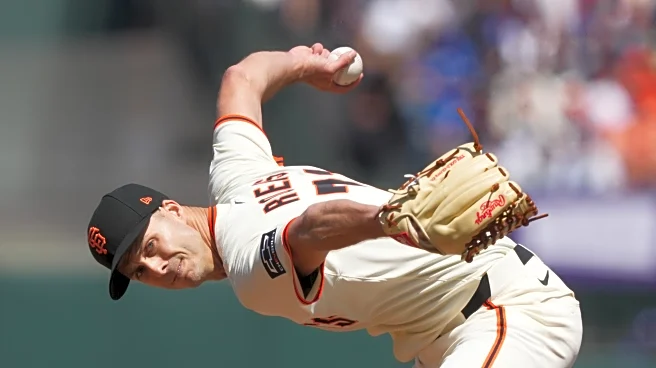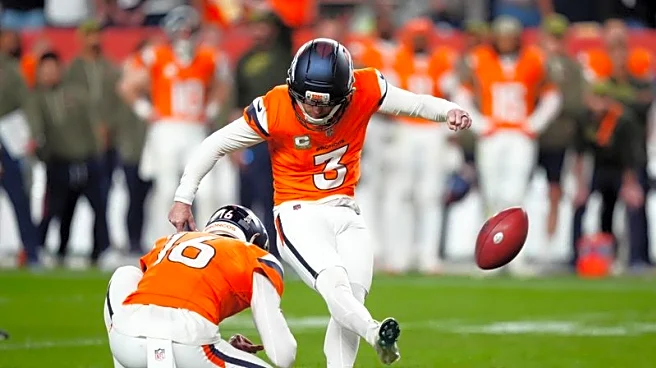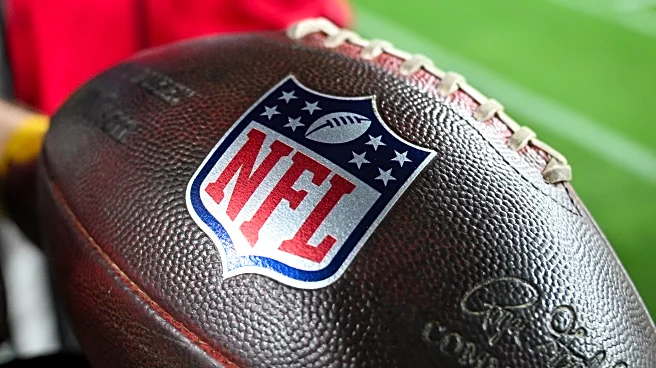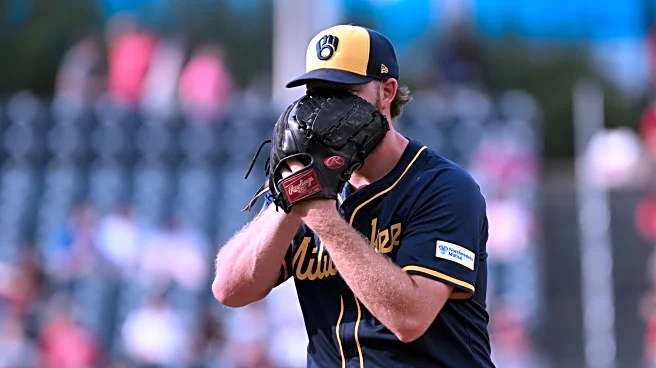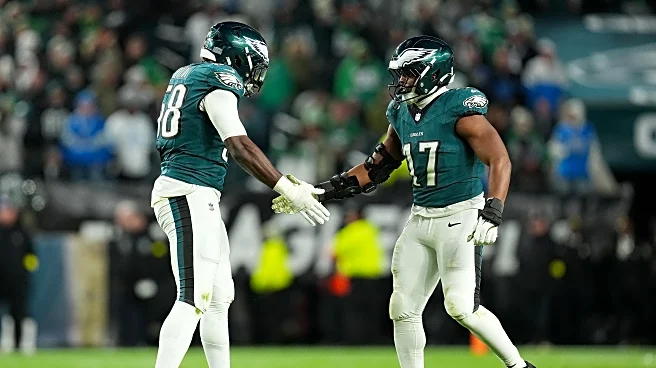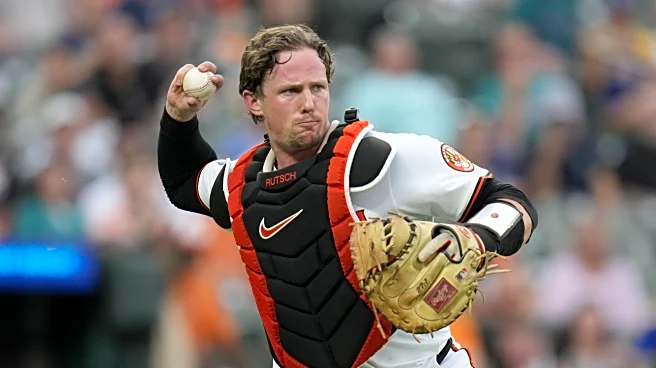The Orioles might have the perfect excuse to bring Tyler Rogers to Baltimore: he’s practically already on the roster. At least nominally. With Trevor Rogers establishing himself as a legitimate ace after
his dominant 2025 season, the Orioles should obviously be allowed to sign Tyler Rogers too. It’s right there in the name. MLB can’t object to a team acquiring a second Rogers when the first one worked out so well, right?
OK, OK, but in all seriousness, Tyler Rogers represents a fascinating possibility for an Orioles bullpen that struggled to a fifth-worst 4.57 ERA over the 2025 season (only Minnesota, the Los Angeles Angels, Colorado, Washington and Arizona were worse).
The 34-year-old submarine-throwing right-hander is coming off an exceptional year split between San Francisco and the New York Mets, posting a miniscule 1.98 ERA across 78 innings in a league-leading 81 relief appearances. That workload alone makes Rogers an intriguing target for a team that cycled through relievers like they were going out of fashion.
Rogers doesn’t blow hitters away with velocity. His fastball averages just 83 miles per hour, placing him in the slowest one percent of pitchers in baseball for the seventh consecutive season. But that’s precisely what makes him special. Throwing from an extreme sidearm delivery that releases the ball below knee level, Rogers has mastered the art of weak contact. In 2025, hitters averaged the slowest exit velocity of any pitcher in baseball at 85.8 mph, while his groundball rate of 64.4 percent ranked third among all relievers. The result? A pitcher who doesn’t need overpowering stuff to consistently get outs.
The durability factor cannot be overstated. Rogers has led the National League in games pitched in four of his six full seasons, including 80 appearances in 2021 and 77 in 2024. Since his debut in 2019, no pitcher in the majors has appeared in more games than Rogers’ 392 relief appearances. For an Orioles team that watched Félix Bautista succumb to injury and struggled to find reliable arms in the back end, Rogers offers the kind of workload stability that allows managers to rest their other relievers.
His 2025 season represented career-best work. With the Giants through late July, Rogers posted a 1.80 ERA across 53 appearances, walking just four batters in 50 innings. After the Giants traded him to the Mets in their deadline sell-off, Rogers maintained his excellence with a 2.30 ERA over his final 28 appearances. His ability to pitch on consecutive days without losing effectiveness makes him especially valuable in October, when bullpens get stretched thin and managers need arms they can trust every other night.
Where would Rogers fit into Baltimore’s bullpen? The beauty of his profile is its flexibility. He’s not a traditional closer, having accumulated just 19 saves across his entire career, but he’s exactly the kind of multi-inning weapon that modern contenders covet. Rogers could slot into the seventh or eighth inning, giving the Orioles a groundball specialist who can be deployed against both lefties and righties (the splits are pretty even).
The question, of course, is whether Baltimore will be willing to meet Rogers’ asking price. Free agent projections vary widely, with estimates ranging from one year at eight million dollars on the low end to three years at 27 million on the high end. FanGraphs projects two years at 22 million, while ESPN suggests three years at 27 million. Spotrac’s market value algorithm pegs him around two years at 22 million annually, which would make him one of the better-paid free agent relievers this winter.
That price tag might ultimately price the Orioles out of the market. Baltimore has been notoriously hesitant to commit significant money to free agent relievers, preferring to patch the bullpen through trades, waiver claims, and internal options. Rogers will turn 35 next month, and while his unique delivery suggests his effectiveness might age better than most pitchers since he doesn’t rely on velocity, teams will still hesitate to commit multiple years to a reliever entering his mid-thirties.
The market will also feature several other compelling relief options, from Ryan Helsley to Devin Williams to A.J. Minter. Teams with deeper pockets than Baltimore might be willing to pay a premium for Rogers’ consistency and durability. The Giants themselves are reportedly interested in bringing him back, and his connection to that organization runs deep after spending his entire career there until the trade deadline.
So is this signing likely or a long shot? Probably somewhere in between. If Rogers’ market develops toward the lower end of projections, around eight to ten million annually on a short-term deal, the Orioles might see value in adding his proven consistency. But if multiple teams bid up the price toward three years and 27 million, Baltimore will likely look elsewhere. The front office has shown willingness to spend on starting pitching but remains more conservative with bullpen investments.
The Orioles need to strengthen the bullpen after the uncertainty that plagued them in 2025. Rogers represents exactly the kind of reliable, durable arm that could stabilize the seventh and eighth innings. Whether Baltimore is willing to pay market value for that stability remains to be seen. But one thing is certain: having two Rogers on the roster would at least make introductions easier in the clubhouse. And given how well Trevor Rogers worked out, maybe there’s something to this whole Rogers thing after all.
